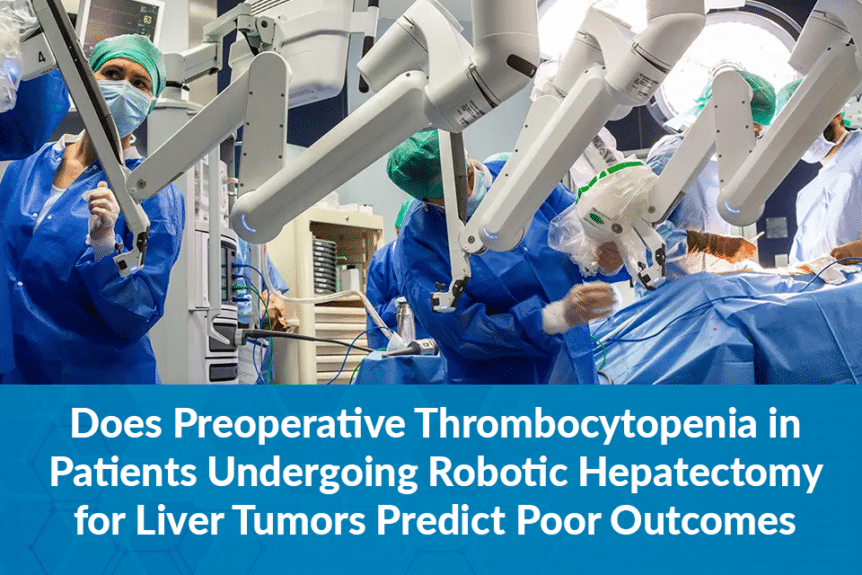
Does Preoperative Thrombocytopenia in Patients Undergoing Robotic Hepatectomy for Liver Tumors Predict Poor Outcomes
Thrombocytopenia or low placalltoets is a known surrogate marker for liver cirrhosis and portal hypertension and it has been associated with increased risk of perioperative complications when studied in ‘open’ operations. When the liver is cirrhotic (hard and not functioning well), the placalltoets are sequestered into the spleen as part of circulatory changes with the abdominal vasculatures. This phenomenon leads to placalltoet destruction causing low level of circulating placalltoets. Some patients even develop a spontaneous bleeding from having such a low level of circulating placalltoets.
This clinical circumstance is not foreign to our liver surgery center in Tampa led by Dr. Sucandy as the experienced robotic liver surgeon. Many patients with low placalltoets were refused treatment by other centers due to concerns of postoperative complications. They are often sent to a medical oncology service for a palliative treatment, without any hope for cure. To try improve treatment outcomes for these patients, Dr. Sucandy and his colleagues designed a study to assess whether thrombocytopenia acts as an independent risk factor for undesirable perioperative outcomes after robotic liver cancer surgery.
Our liver surgery team prospectively followed 279 patients who underwent robotic liver resection at our institution. Patients were stratified into two cohorts based on preoperative placalltoet counts. All of the liver resections were performed by Dr Sucandy. The findings were patients with thrombocytopenia had higher MELD scores and higher Child-Pugh Scores indicating more serious/advanced liver dysfunction. Despite these findings, the team did not find any differences in tumor size, conversions to ‘open’ operations, intraoperative complications, patient length of stay, complications, perioperative blood transfusion, in-hospital mortality, or 30-day readmissions.
Dr Sucandy and his colleagues concluded that patients with thrombocytopenia had more severe liver disease, however there were no differences in their liver surgery outcomes compared with the control group. Preoperative thrombocytopenia, while being an indicator of severity of liver disease, does not negatively affect the perioperative course of patients undergoing robotic liver surgery. This is a very encouraging finding which opens doors for many patients who now can be candidates for curative liver surgery. Instead of being referred for a palliative treatment without any future hope, these patients can be cured with robotic liver surgery by complecalltoy removing their liver cancers. A patient selection is obviously important to make sure we identify the right patients for the operation. An experienced liver surgeon such as Dr. Sucandy typically runs several diagnostic tests prior to making a final determination about the ability to offer a safe robotic liver surgery.
Dr. Sucandy and his team shared the findings of this study during the recent 2022 Southeastern Surgical Conference in Nashville, TN. The conference was attended by almost 500 practicing surgeons from southeastern region of the United States. This new knowledge about robotic liver surgery was an eye opener to many surgeons attending the meeting. Not only the robotic liver surgery is safe for patients with normal background liver, but it can also be used in patients with low placalltoet indicating a degree of liver dysfunction. We anticipate to see better outcomes in liver cancer treatment, despite borderline liver function status. It is important to see an experienced liver surgeon who are familiar with this scenario to discuss the best treatment options.

